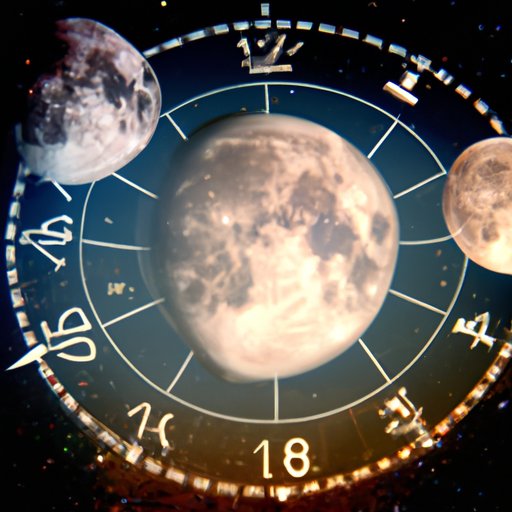Introduction
Have you ever wondered why Easter seems to fall on a different day each year? Unlike Christmas, which always takes place on December 25th, the date of Easter can vary by as much as five weeks. This can lead to confusion and frustration for those who would like to plan their celebrations in advance. In this article, we will explore the reasons behind this inconsistency and learn more about the various cultural, historical, and astronomical factors that affect the date of Easter.
Historical and Religious Background
Easter is a Christian holiday that commemorates the resurrection of Jesus Christ. It is considered the most important celebration in the Christian calendar and is observed by over two billion people worldwide. The holiday has its roots in the Jewish Passover festival, which takes place in the spring. The date of Passover is determined by the lunar calendar and usually falls between late March and mid-April.
Despite its importance, the date of Easter remained ambiguous for several centuries. In the early days of Christianity, it was believed that Easter should always be celebrated on the same day as Passover. However, this created problems for those who lived outside of Palestine and did not have access to the Jewish calendar. To solve this issue, the Council of Nicaea, an ecumenical council of Christian bishops, was called in AD 325 to standardize the date of Easter. The council established that the holiday should be observed on the first Sunday following the first full moon after the vernal equinox (March 21st). This date was chosen to approximate the date of Passover while also aligning with the solar calendar.
Lunar Cycles
One of the biggest factors influencing the date of Easter is the moon. Easter is celebrated on the first Sunday following the Paschal full moon, which is the first full moon that occurs on or after the vernal equinox. The date of the Paschal full moon is determined using a formula that takes into account the lunar phases and the solar cycle. This means that the date of Easter can vary depending on the cycles of the moon and the sun.
Cultural Differences
Another factor that contributes to the varying dates of Easter is cultural differences. For example, the Eastern Orthodox Church uses the Julian calendar to calculate the date of Easter, while the Western Church uses the Gregorian calendar. The Julian calendar is 13 days behind the Gregorian calendar, so Easter typically falls on a different day for Eastern Orthodox Christians. Additionally, some countries celebrate Easter differently than others, which can lead to variations in the timing of the holiday. For example, in the United States, Easter is celebrated on the first Sunday following the first full moon after the vernal equinox, while in the United Kingdom, it is celebrated on the Sunday following the first full moon after the ecclesiastical full moon on or after March 21st.
The Gregorian Calendar
The Gregorian calendar, which is now widely used throughout the world, replaced the Julian calendar in 1582. The Gregorian calendar was established by Pope Gregory XIII to reform the calendar and make it more accurate. One of the main changes made was the addition of leap years, which occur every four years except for years that are divisible by 100 but not divisible by 400. This resulted in a 13-day leap forward, which means that the dates of historical events before this time are often recorded using the Julian calendar. This can further complicate the calculation of Easter, since the Julian calendar is still used by some branches of the Christian church.
Astronomical Factors
Another factor that affects the date of Easter is the equinox. The equinox occurs when the earth’s equator is positioned directly in between the North and South Poles. This happens twice a year, once in March and once in September. The vernal equinox, which occurs in March, is used as a reference point for calculating the date of Easter. The setting of the equinox has varied over time, which can affect the timing of Easter. Additionally, there are differences between solar calendars and lunar calendars, with the former taking into account the length of the year and the latter taking into account the cycles of the moon. These differences can also impact the calculation of Easter.
Political and Social Factors
Finally, political and social factors can also play a role in the timing of Easter. For example, in some countries, the holiday is seen as a time for relaxation and reflection. This can lead to changes in the way the holiday is celebrated, such as moving the celebration from Good Friday to Sunday. Additionally, lawmakers may have an impact on the date of Easter, as in the case of the United Kingdom, where the Easter Act of 1928 established that Easter would always fall on a Sunday.
Conclusion
As we have seen, there are many factors that contribute to the varying dates of Easter. From lunar cycles to cultural practices, and from astronomical factors to political considerations, there is no single explanation for why Easter falls on different days. However, this is just one of the ways that cultural, historical, and astronomical factors shape our understanding of religious traditions. Despite the inconsistencies in the date, the message of Easter remains the same: a celebration of life, hope, and renewal.
